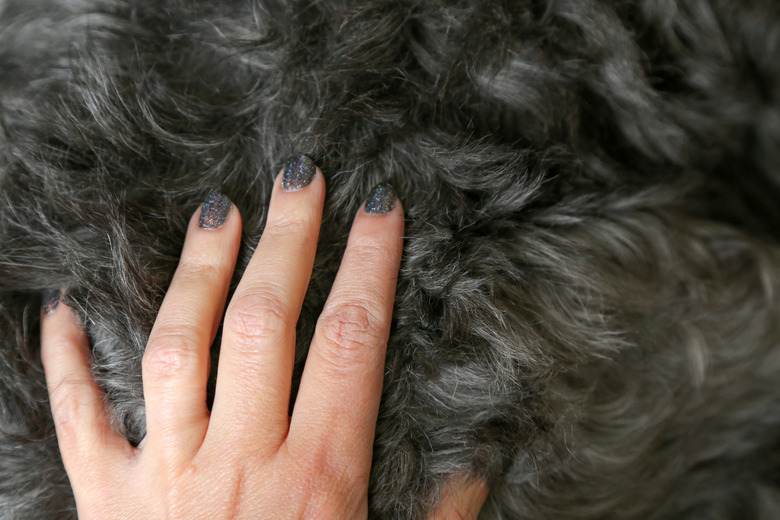Bleeding Red Bump On Dogs
Lumps and bumps are a part of life for both dogs and people, especially as we grow older. Some bumps are harmless and may just be more cosmetically bothersome than anything else, but others could be the sign of something much more serious, like cancer. No matter what, though, when those lumps start bleeding, that's another matter altogether because it could lead to a serious infection. When any type of bump starts to bleed, it's time to get your pooch to the doctor for a checkup.
Blood blister on dog
Blood blister on dog
If you find a raised red bump on your dog, it could be a blood blister, also known as a hematoma. Hematomas are raised bumps under the skin filled with blood that can form anywhere on your dog's body, according to PetMD. Blood blisters on dogs are usually the result of an injury or trauma of some kind, although they can also occur due to a blood clotting problem. If your dog scratches at the bump, it may start to bleed.
Your veterinarian can examine the blood blister on your dog to determine if it's a hematoma. Sometimes, if the blood blister on your dog is small, it may resolve on its own, but larger ones may need to be drained. To treat very large blood blisters on your dog, your vet may even place a temporary drain within the hematoma to get rid of excess fluid buildup.
Lump on dog bleeding
Lump on dog bleeding
Histiocytomas in dogs can pop up anywhere on the body and appear as red lumps. These types of growths are most common in dogs under five years old, according to VetInfo. Although they may look unsightly, these lumps are typically harmless and can be removed with surgery if necessary. Your vet may also prescribe topical creams or antibiotics to treat these types of growths if they become infected and the lump on your dog starts bleeding.
Because a histiocytoma can look similar to a cancerous growth, your veterinarian will have to take a biopsy of it to determine if it is benign. If it is harmless, then surgery isn't necessary unless it's near one of your pup's joints or on his eyelid, which could cause him discomfort. Otherwise, this type of lump on your dog that's bleeding resolves itself typically within six months.
Cancerous growths on the skin
Cancerous growths on the skin
There are many types of red bumps on your dog that could turn out to be cancer, which is why visiting a veterinarian for an exam and possible biopsy is so important. Fibrosarcomas are quick-growing invasive tumors that could appear on your dog's skin as enlarged red bumps. These lumps may rapidly grow in size over a period of days or weeks. Hemangiosarcomas are also cancerous growths that result from sun damage, according to PetWave. These may look reddish to blue.
Your veterinarian will need to examine the red bump that's on your pup's skin. If it's bleeding, it could be because the skin has become thin and irritated due to the size of the mass. Your vet can biopsy the lump to determine if it's cancerous. Depending on how much cancer has spread, your vet may prescribe surgery, radiation, or chemotherapy.
Red bump on dog
Red bump on dog
A red bump on your dog's body can indicate an abscess. Abscesses are raised bumps that result from a bacterial infection of the skin. This type of red bump on your dog will eventually break open and begin draining pus and blood. Abscesses are usually caused by a skin wound to the skin that becomes infected, according to PetMD.
You will need to see your veterinarian right away if you see a red bump on your dog that could be an abscess. Infections can spread quickly to your pup's bloodstream if not appropriately treated. Your vet will swab the area to determine the type of bacteria that could have affected the wound and do a blood test to see if the bacteria has spread to the bloodstream. She may prescribe topical antibacterial ointments or oral antibiotics depending on how severe the infection is.
Always check with your veterinarian before changing your pet's diet, medication, or physical activity routines. This information is not a substitute for a vet's opinion.
